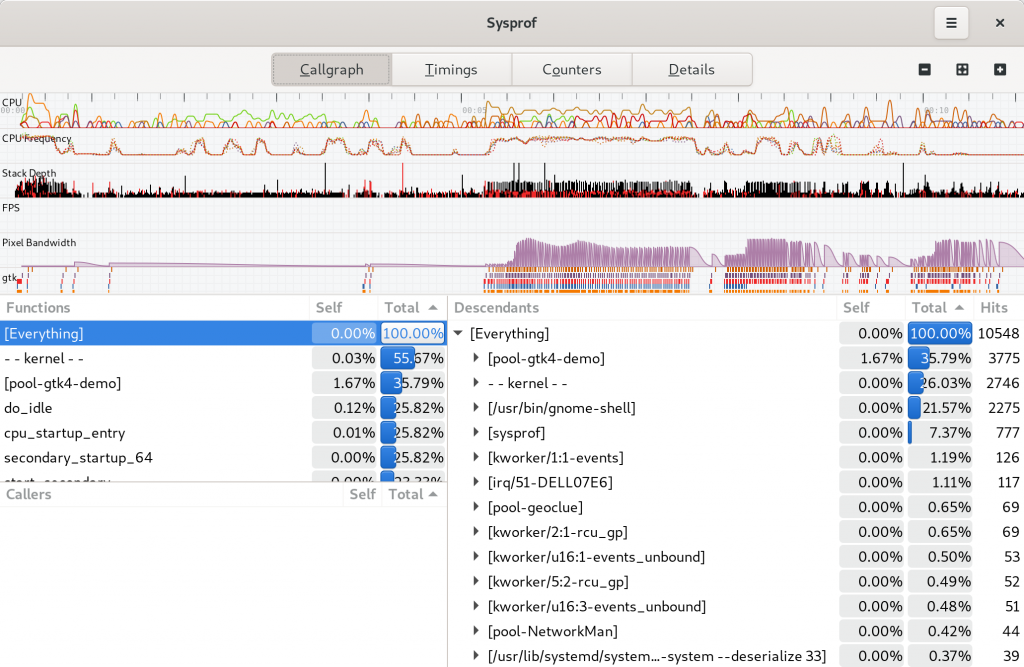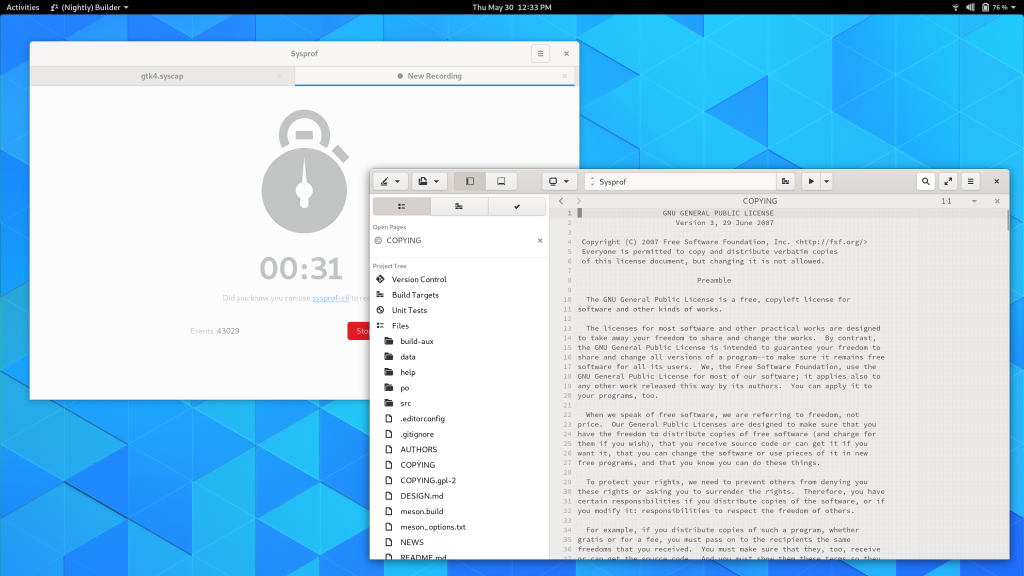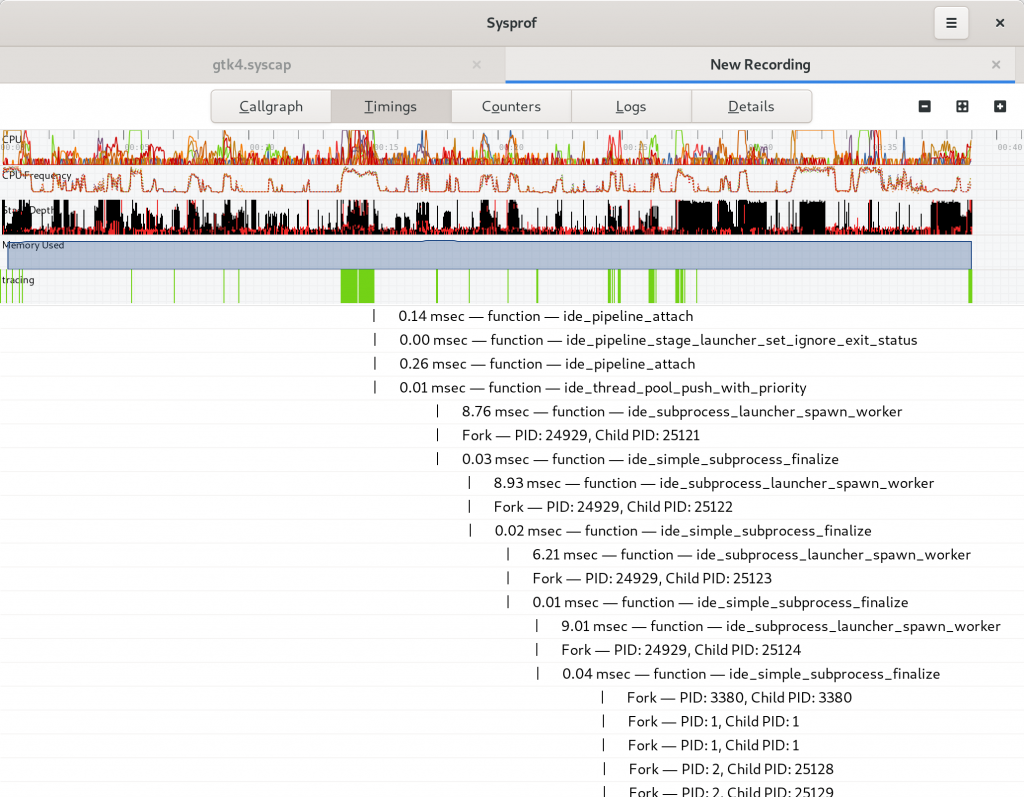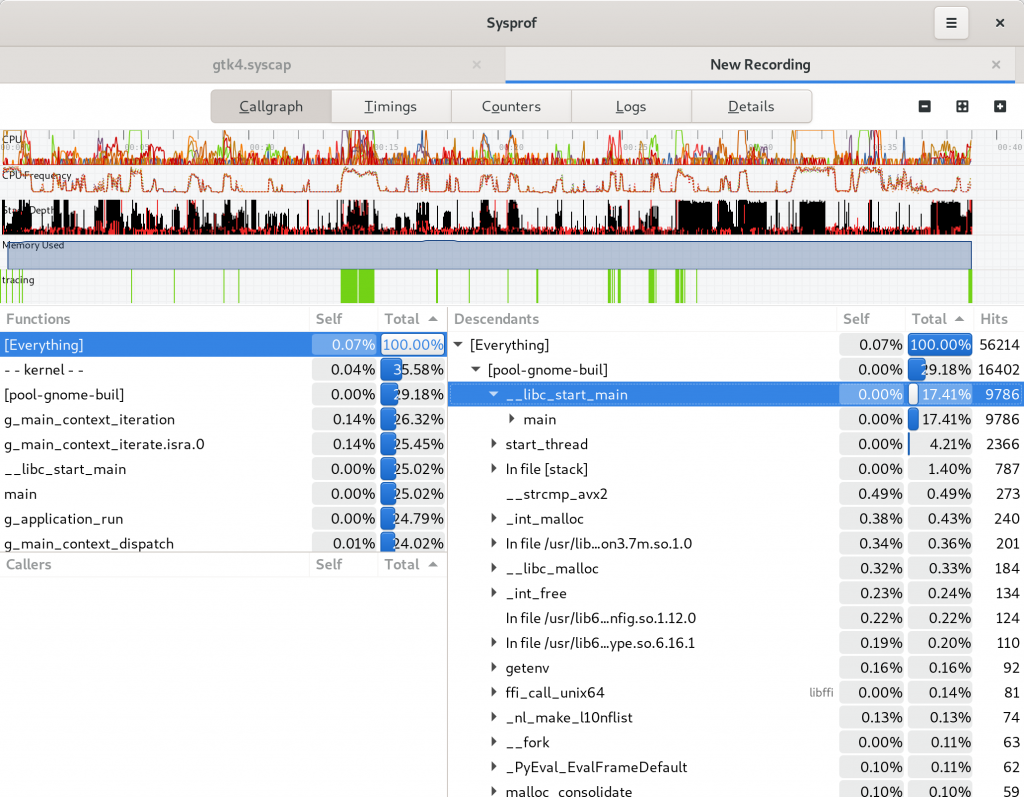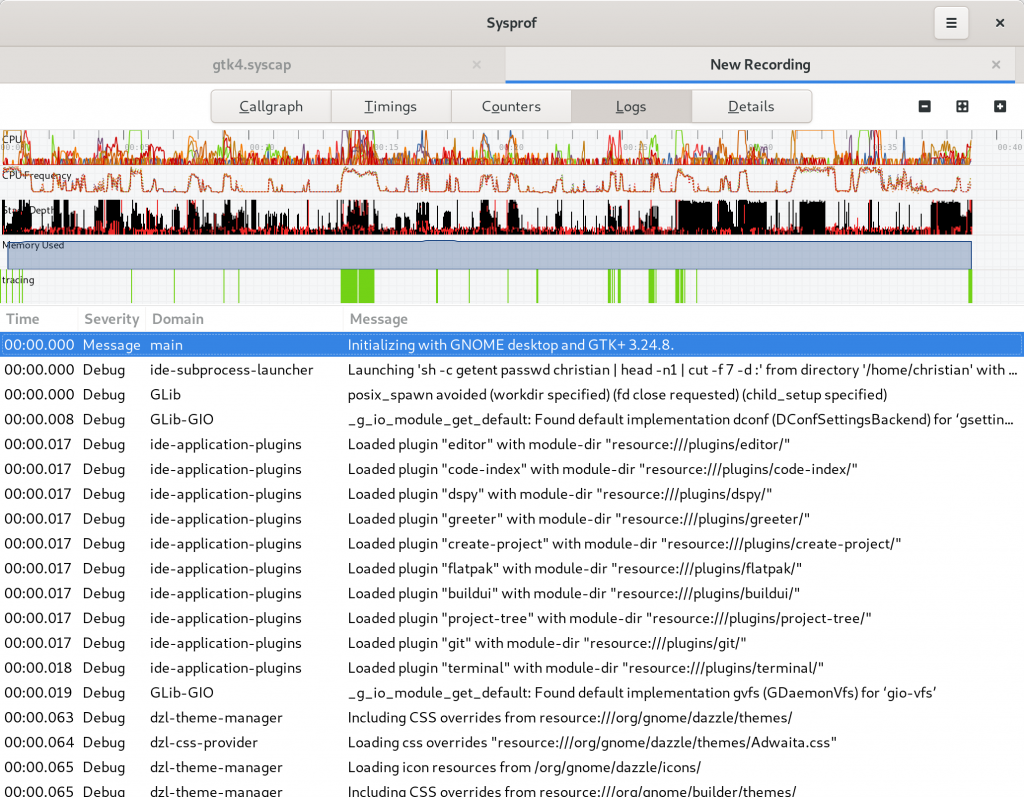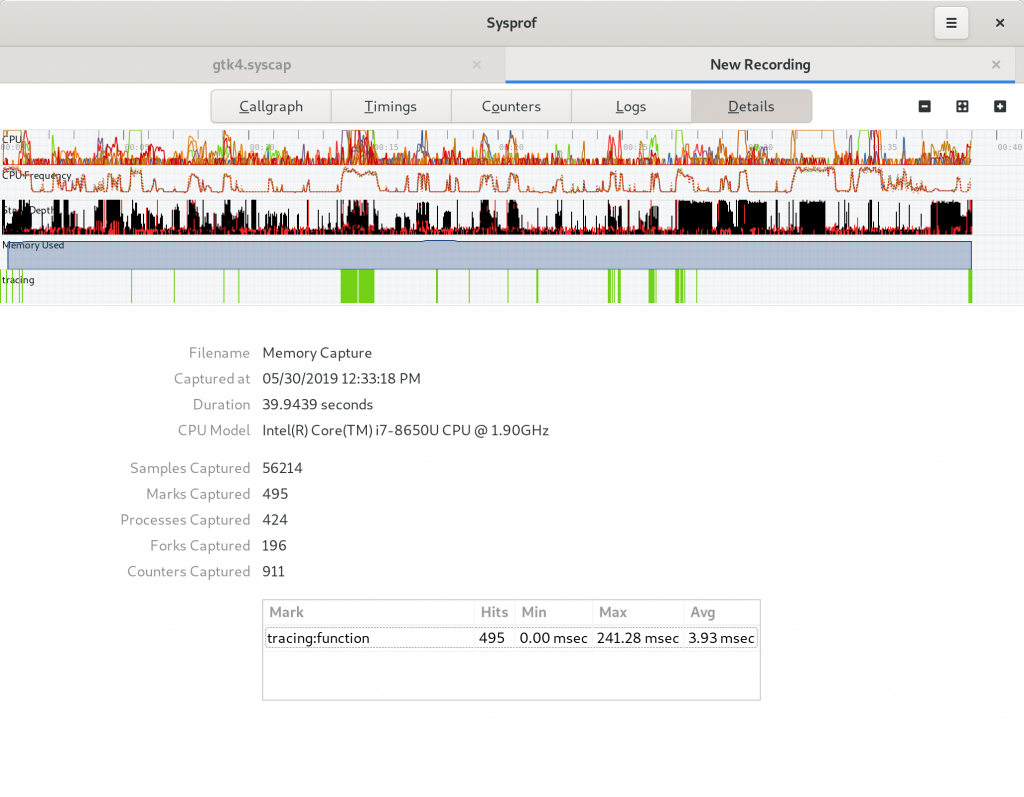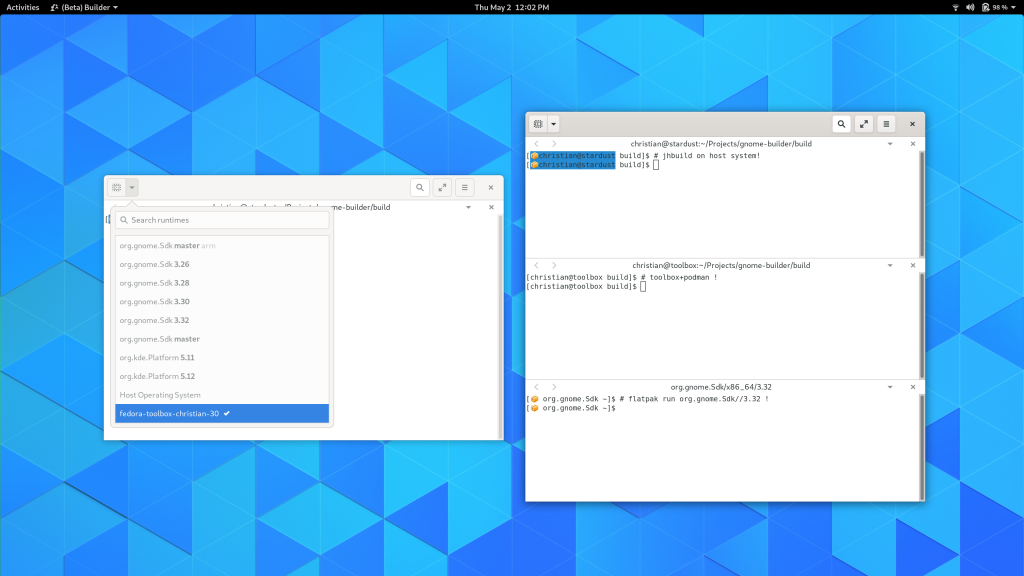Earlier this month, Matthias and I teamed up to push through some of our profiling tooling for GTK and GNOME. We took the occasional work I had done on Sysprof over the past few years and integrated that into the GTK-4.x tree.
Sysprof uses a binary log file to store information about execution in a manner that is easy to write-buffer and read-back using positioned reads. It helps keep the sampling overhead of sysprof low. But it’s too detail oriented for each application supporting the format to write. To make this stuff reusable I created a libsysprof-capture-3.a static library we embed from various layers of the platform.
GTK-4.x is now using this. Builder itself uses it to log internal statistics, tracing data, and counters for troubleshooting. I’ve also put forward patches for GJS to integrate with it. Georges revamped and pushed forward a prototype by Jonas to integrate with Mutter/Shell and get us frame timings and Cogl pipeline data. With some work we can finish off the i915 data sources that Eric Anholt did to correlate GPU commands too.
What this means for developers is that soon we’ll be able to capture system information from various layers in the stack and correlate them using similar clocks. We’re only scratching the surface right now, but it’s definitely promising. It’s already useful to quantify the true performance improvements of merge-requests in Mutter and Shell.
To help achieve this goal during the 3.34 cycle, I’ve started the GNOME Profiling Initiative to track integration of various problem spaces. If you’re an application developer, you can use sysprof_capture_writer_new_for_env() to create a new SysprofCaptureWriter if Sysprof is profiling you (otherwise you’ll get NULL back). Use that to write marks, logs, metadata, files, or anything else you would like to capture.
If you’re interested in helping to write more data collectors, that would be appreciated. Data sources like battery voltage/wattage consumption seem like good candidates so that we can better optimize our platform for battery-based devices.
I have a Sysprof Copr repository for Rawhide and F30 if you’d like to try stuff out and submit issues.
Many thanks to Red Hat for sponsoring all the work I do on GNOME and my amazing manager Matthias for visiting Portland to make this stuff happen even sooner.
As always, follow my grumpy ramblings on birdsite for early previews of my work.
